NASA’s next-generation Moon rocket has left the launchpad on the first flight of the Artemis program.
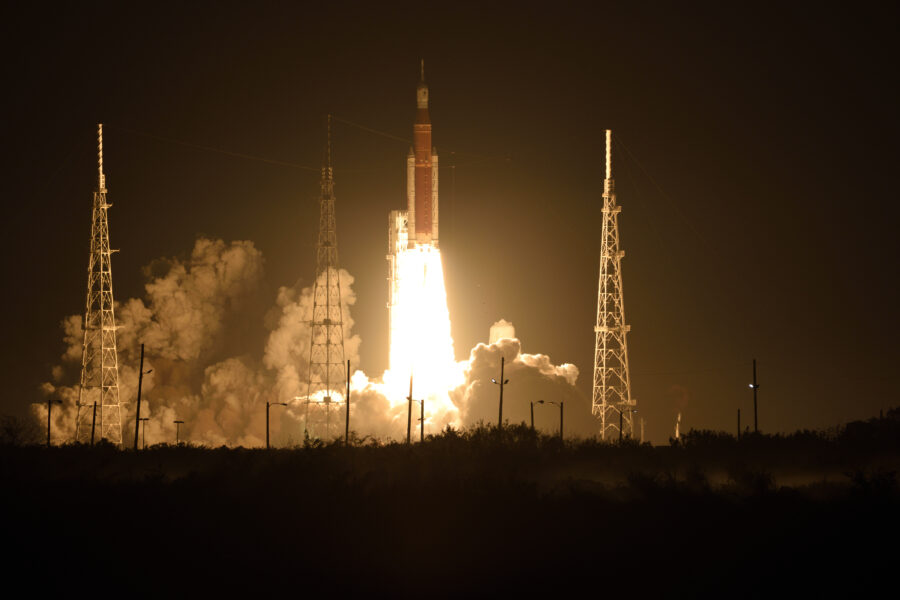
Kirby Kahler
At long last, NASA’s new super-heavy lift rocket is headed for the Moon.
The launch of the Space Launch System (SLS) Block 1 rocket with the Artemis 1 mission occurred early this morning on Wednesday, November 16th, at 1:47 a.m. ET / 6:47 UT from launch pad LC-39B at the Kennedy Space Center in Florida. All launch conditions were nominal.
The successful night launch comes after four wet dress rehearsals earlier this year, none of which made it down to the T-10 second mark, and a delay from the initial launch date on Monday, August 29th, when multiple issues encountered while fueling the rocket forced a scrub.
Another launch attempt delay in September put SLS back in the Vehicle Assemby Building, as NASA slipped Artemis 1 to the secondary November window. Then, Hurricane Nicole caused another one week delay to this week. The rocket rode out the storm on the pad, and teams assessed the damage from the storm to be slight enough for the launch to go forward.
"It's taken a lot to get here, but Orion is now on its way to the Moon," says Jim Free (NASA Deputy Associate Administrator) in a recent press release. "This successful launch means NASA and our partners are on a path to explore farther in space than ever before, in the benefit of humanity."
Over a decade in the making, the SLS rocket is the cornerstone of the Artemis program, NASA’s new initiative to return astronauts to the Moon. Artemis 1 is uncrewed and meant to test the system for future human passengers. Artemis takes its name from the Greek goddess of the Moon, the sister of Apollo.
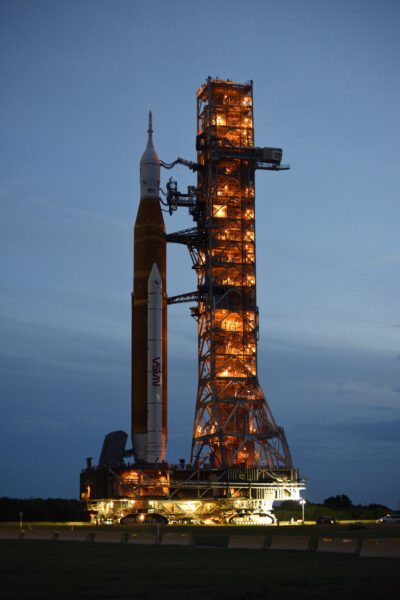
Kirby Kahler
Although NASA is footing the bulk of the launch's $4 billion bill, the mission is truly an international effort, with agencies including the European Space Agency (ESA), the Japanese Aerospace Exploration Agency (JAXA), Israel, and the Italian Space Agency contributing to the mission. Each partner provided hardware to the mission, such as ESA's European Service Module for Orion or smallsat payloads.
The SLS uses two Space Shuttle-era solid rocket boosters and a core stage containing four RS-25D engines, which have also flown on previous shuttle missions.
The Interim Cryogenic Propulsion Stage second stage pushed the mission out of Earth orbit at T+1 hours 55 minutes at the end of the Trans-Lunar Insertion burn. Afterwards, at T+2 hours 5 minutes, the Orion capsule separated and successfully deployed both its solar panels. The mission is expected to deploy the CubeSat payloads onboard post-separation, according to the payloads' missions.
The Artemis mission’s major objective is to test the Orion capsule’s heat shield during its high-speed reentry on return from the Moon. Other primary objectives include testing the SLS rocket as well as systems integration in space, in preparation for launching human astronauts on Artemis 2. The flight will also include a thermal stress test in the environment of deep space.
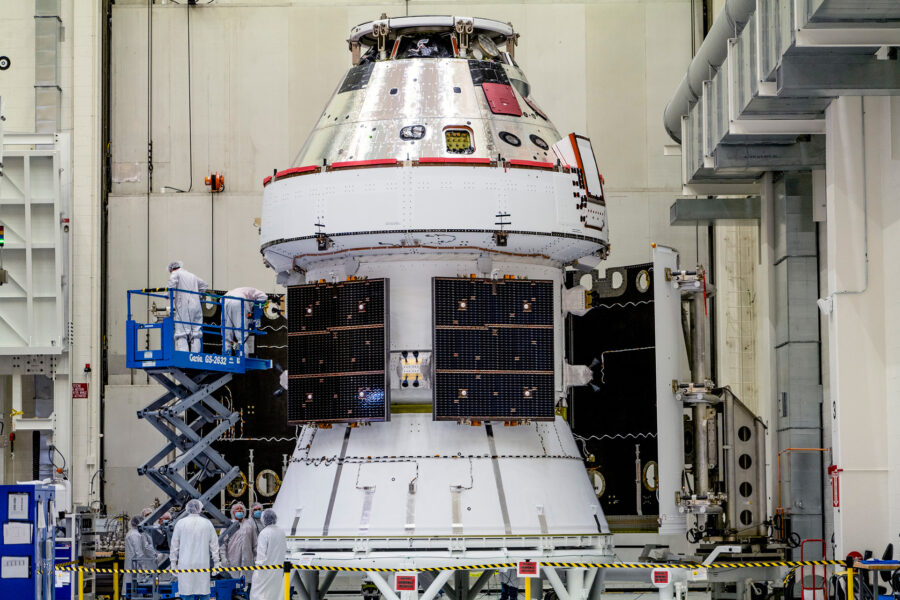
NASA
On future Artemis flights, astronauts will be in deep space much longer than they were on Apollo missions, and Artemis 1 will be studying the radiation exposure they will experience in this environment. To this end, three “passengers” are nestled in the Orion capsule: mannequins, designed to record conditions during launch, deep space, and reentry.
One of these, “Moonikin Campos,” is named after Arturo Campos, a NASA electrical engineer who played a key role bringing Apollo 13 astronauts back from the Moon. This mannequin will monitor acceleration and vibration throughout the mission. Two more — dubbed Zohar and Helga — will chronicle radiation exposure throughout the mission. Zohar will wear an AstroRad protective vest, while Helga will serve as a control and will not.
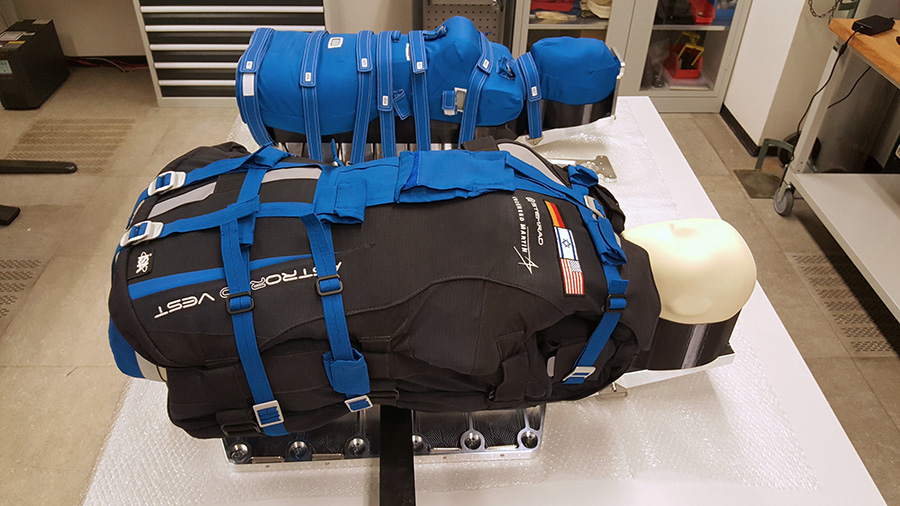
NASA
Ten CubeSats are in the Orion spacecraft’s stage adapter ring, now bound for either lunar or heliocentric orbit. (Three additional CubeSats missed the window for integration on Artemis 1 and will have to find an alternative path to the Moon.) The ten smallsats include the following:
- LunIR: Designed by Lockheed Martin, LunIR will map the lunar surface via thermography and spectroscopy.
- OMOTENASHI: JAXA’s CubeSat will employ a retro-rocket and airbag in order to break the record for the smallest lander on the Moon.
- Near Earth Asteroid Scout: This CubeSat will head to the small (60 feet/18-meters in diameter) near-Earth asteroid 2020 GE, with a rendezvous expected in September 2023.
- Lunar Polar Hydrogen Mapper (LunaHMap) Designed by Arizona State University, LunaH-Map will look for hydrogen locked in water ice in permanently shadowed craters near the lunar poles.
- Lunar IceCube: Designed by Morehead State University, Lunar IceCube will also search for surface water ice from low lunar orbit.
- EQUULEUS: Another JAXA payload, the EQUilibrium Lunar–Earth point Spacecraft will examine Earth's plasmasphere from the L2 Lagrange point on the other side of the Moon from Earth.
- CuSP: Designed by the Southwest Research Institute, the Cubesat for Solar Particles, will study particles streaming from the Sun, providing a proof-of-concept for a future network of space-weather smallsats in heliocentric orbit.
- BioSentinel: Designed by NASA Ames Research Center, BioSentinel will carry budding yeast on an 18-month mission in heliocentric orbit to study the effects of radiation in deep space on life.
- ArgoMoon: Designed by Argotec and the Italian Space Agency, ArgoMoon will image the rocket's Interim Cryogenic Propulsion Stage booster.
- Team Miles: This mission will employ a hybrid ion thruster to demonstrate long-distance communication in heliocentric orbit.
Carrying on the tradition of Apollo, a new batch of “Moon tree” seeds are also onboard Orion, to be distributed and planted upon return to Earth.
Also onboard is Callisto, a test of voice-activated assistant technology for future astronauts. Think of it as Alexa in space. I hope they’ll give it a 2001:A Space Odyssey Hal-9000 style voice . . .
Artemis 1: A Timeline
Orion is solar-powered and cannot be in the shadow of the Earth or Moon for more than 90 minutes duration. This dictated the launch windows, flight path geometry, and flight duration for the mission.
Based on these and other constraints, Artemis is now on a 25.5-day trajectory that takes it beyond the Moon and back, including two close lunar flybys. Slipping to November put the mission on a shorter than anticipated timeline; the original mission was 43-days long. Now on its way out of Earth orbit, Artemis 1 will begin transfer to a Distant Retrograde Orbit around the Moon on the mission's sixth day.
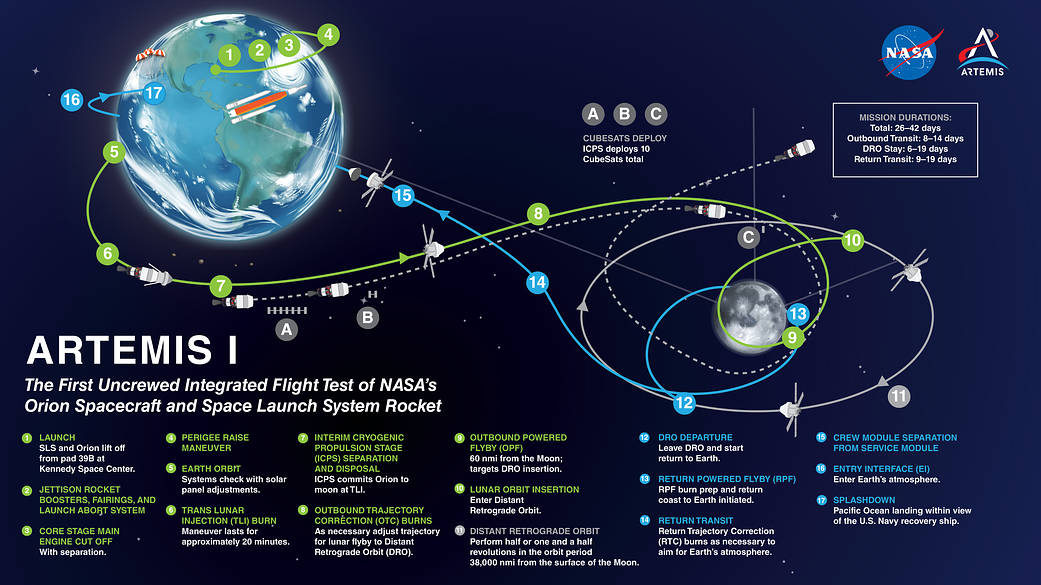
NASA
After making closest approach to the Moon, Orion will pass just 60 miles above the lunar surface. Day 10 sees Orion making its formal insertion burn into a distant retrograde orbit. By Day 13, the spacecraft will reach a maximum distance of 298,565 miles (480,494 kilometers) from Earth, the farthest a habitable vehicle has gone.
On day 20, Orion makes its second lunar flyby. Reentry into Earth's atmosphere, splashdown, and recovery of the Orion capsule will occur in the Pacific Coast near San Diego on Day 26, now falling on December 11th.
You can watch the mission yourself: Artemis should be listed in NASA’s JPL/Horizons ephemerides generator post launch, and Unistellar now lists Artemis 1 in its Moving Target Ephemerides Generator for GOTO- and smartphone-controlled telescopes.
What’s Next for Artemis
The SLS is part of a new generation of heavy lift rockets that are under development or have just started flying, including China’s Long March 5 and SpaceX’s Falcon Heavy and Starship. The SLS Block 1 rocket is capable of sending 27 tons to deep space and, at 2,500 tons, is lighter than Apollo’s Saturn V.
The next mission, Artemis 2, will feature crew, launching in May 2024 (tentative) for a lunar flyby and return. The first crewed landing of the Artemis project should occur on Artemis 3 no earlier than 2025. NASA has stated that the Artemis initiative will land the first woman and first person of color on the Moon.
NASA recently announced potential landing sites for that crew, which will set foot in the lunar south pole. One of the 13 sites is near Nobile Crater, the proposed site for NASA’s Volatiles Investigating Polar Exploration Rover rover (VIPER), which is set to head to the Moon in 2023.
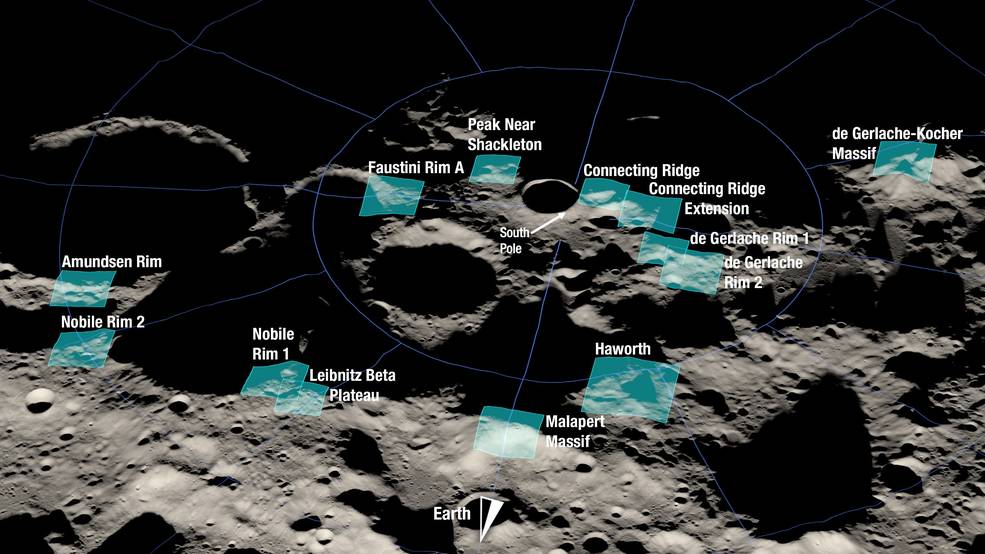
NASA
Another objective for the Artemis initiative is the construction of the crewed Lunar Gateway Platform in orbit around the Moon. The small Lunar Gateway pathfinder mission Capstone launched in June to test the station's unique near-rectilinear halo orbit. Capstone just entered its unique orbit around the Moon this past weekend. Launch of the first module for Lunar Gateway is currently set for late 2024.
Was SLS worth it? Cost overruns and space punditry aside, I think that most fans of space exploration are just glad to see the promise of humans leaving low-Earth orbit once again. It has been a rocky road getting SLS to the launch pad, but the wait was worth it as we watch Artemis 1 pave the way for humans to return to the Moon.
Follow Artemis 1 with updates from NASA's live Artemis blog.
Editorial note: The article was updated to reflect the 27-ton lift capacity for the Block 1 rocket. The Block 2 rocket will be able to lift 46 tons to orbits beyond Earth.
 3
3









Comments
bumpnfuzzys
November 16, 2022 at 6:45 pm
NASA’s next-generation Moon rocket?????
This is nothing more than play doh space shuttle designed to support a government jobs program!
You must be logged in to post a comment.
Don-Kerouac
November 19, 2022 at 2:23 pm
I started reading library books on astronomy when I was ten.
I was a 19 year old rabid space program fan when Apollo 11 set off for the Moon. I wanted to go!
Watching this launch brought back some of those exciting memories. However, I can't help but wonder what the point of another manned Moon program is other than political gains and a somewhat more polished rehash of an event that occurred more than 50 years ago.
In a time when world economies have been brutally savaged by incompetent political leaders, I feel that limited space budgets would be better spent funding more robotic missions and space telescopes doing real astronomical science...a rebuild of the solely missed Arecibo Observatory and another gravitational wave observatory comes to mind.
I expect this view will not be shared by many who grew up on Star Trek and would lecture me on the need for humans to explore in person but we have to eventually to recognize the reality that travel to the stars is not possible/practical in any way without violating the laws of Nature.
You must be logged in to post a comment.
Ze De Boni
November 24, 2022 at 10:57 am
I join your and bumpnfuzzys' posts. NASA has a schizophrenic behavior as a leader in science (mainly astronomy) research and educational outreach. While it is important to expand the study programs means to go beyond our settled knowledge, the ever limited resources should be spent on more feasible matters with more practical return. Dreaming is fuel for development, but any high-school teacher can explain that planet colonization and interestelar trips will always stay like this, just wonderful sources for science fiction. If NASA keep telling this tale they will give reasons for questioning if all they are doing is just "to support a government jobs program".
You must be logged in to post a comment.
You must be logged in to post a comment.